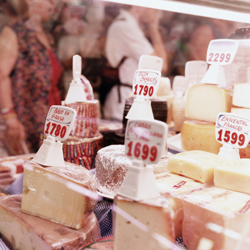Boosting protein in the rustic cheeses of Spain
An indigenous hardy Spanish sheep used primarily for dairy production, the Churra breed, has recently been subject to genomic analysis. The aim of the 'High resolution mapping of a QTL region influencing fat percentage in Spanish Churra dairy sheep' (Sheepmilkgenes) project was to identify multiple quantitative trait loci (QTL) that influence milk fat and protein content. Sheepmilkgenes took advantage of the information on the sheep genome from the latest release of the Bovine Genome and the Virtual Sheep Genome sequencing projects. The scientists used a combined linkage and linkage disequilibrium mapping approach. Linkage analysis is powerful in detecting QTL and linkage disequilibrium allows use of historical gene recombinations and can therefore distinguish between very dense marker maps. Genes for prolactin (PL) and alpha-lactalbumin (LALBA) from two regions of interest in the sheep genome were selected for analysis. The team identified 33 and 31 single nucleotide polymorphisms (SNPs) in these genes, respectively. The results regarding the LALBA gene were prepared for publication. Data from high-density fine-mapping based on SNP array genotyping was also the subject for a scientific journal publication. A total of 4 166 and 929 SNP markers were analysed for the two regions. Due to the success achieved to date the researchers aim to identify the specific allele variant underlying the QTL influencing protein percentage. If achieved, identification of the possible mutation into classical breeding schemes could be very valuable indeed as this trait has a direct influence on cheese yield. Conserving local breeds is important from not only a genetic but also an environmental point of view. The Churra sheep is well adapted to the climates of rural Castilla and León which are prone to extremes of cold and heat, especially in the mountainous regions. Incorporating genes identified as a result of modern genetic techniques into rustic sheep breeds like the Churra should have a positive effect on the livestock industry in the region as well as help to maintain rural life.







